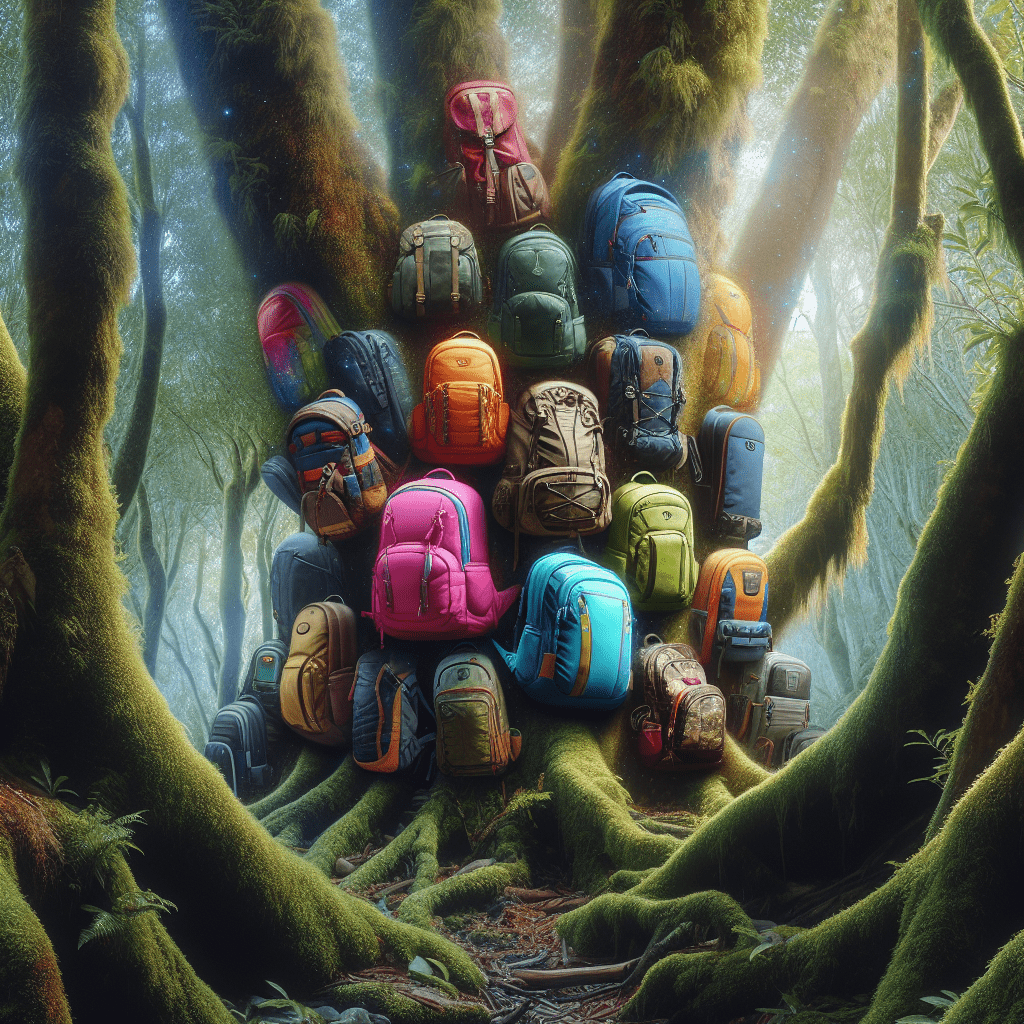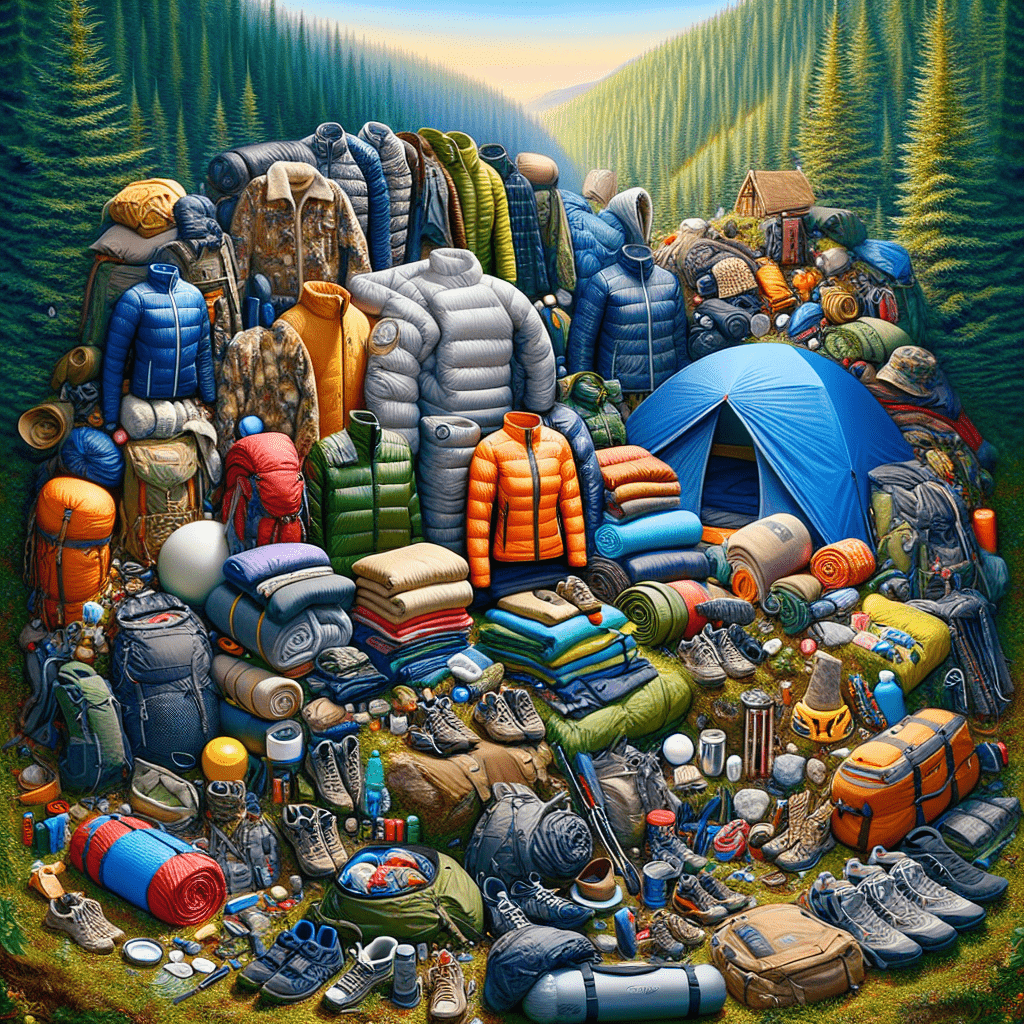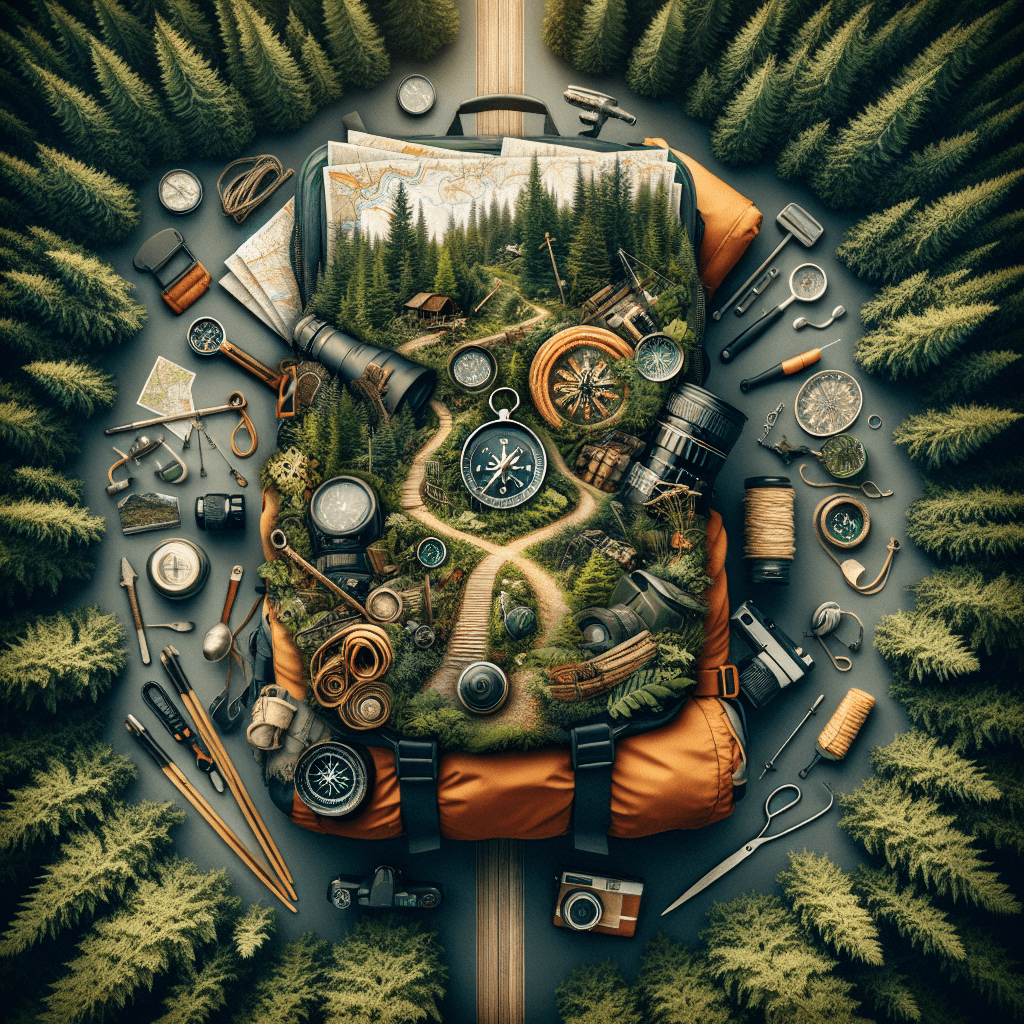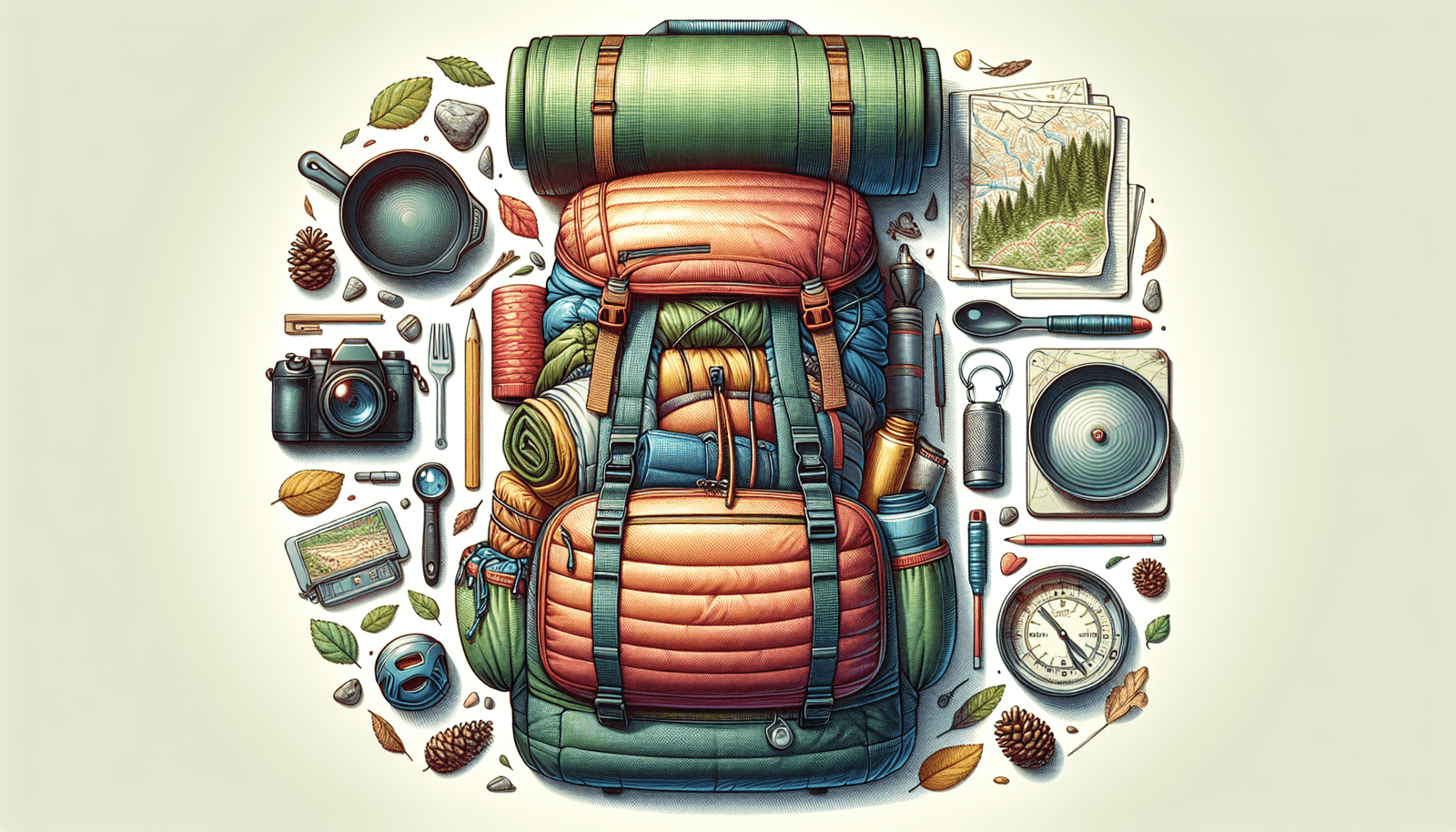Packing your backpack for a camping trip can feel overwhelming, especially for beginners. However, learning how to pack a backpack for a camping trip efficiently is crucial for comfort and preparedness. This expanded guide will take you through every step of the process to ensure your next adventure is a success.
Why Proper Backpack Packing is Important
Proper packing not only ensures comfort but also safety. An uneven load can lead to discomfort and even injury. Incorrectly distributed weight can cause back and shoulder pain, potentially leading to fatigue or accidents on the trail. In addition, organizing your backpack properly ensures that essential items are easily accessible when you need them, reducing stress and improving your overall camping experience. For example, having your first aid kit at the bottom of your bag when you need it urgently can be problematic, so strategic packing is key.
Proper packing also helps preserve the longevity of your gear. Compressing items correctly prevents unnecessary wear and tear, while balancing the weight keeps your backpack from becoming lopsided, which can lead to uneven stress on the fabric and straps. Furthermore, packing efficiently can help you move faster and more comfortably on the trail, which is especially important on long hikes or rough terrain.
Choosing the Right Backpack

Consider the Size
Selecting the right backpack size is essential for a comfortable trip. Here’s a more detailed breakdown of how to choose the correct capacity based on your trip duration and gear requirements:
| Trip Duration | Backpack Capacity (Liters) | Description |
|---|---|---|
| Day Trip | 20-30 liters | Ideal for carrying the basics: water, snacks, a light jacket, and small essentials. This size is lightweight and easy to carry, perfect for short excursions. |
| 2-3 Days | 30-50 liters | Suitable for overnight trips where you need to pack a tent, sleeping bag, food, and additional clothing. It offers enough space for extra gear without being too bulky. |
| 4+ Days | 50+ liters | Designed for extended trips, this size can accommodate all the essentials plus extra clothing, cooking gear, and more food. It’s spacious enough for multi-day adventures but requires careful packing to manage weight distribution. |
When choosing a backpack, it’s also important to consider the design features. For example, some backpacks come with external frames, which offer better ventilation and weight distribution, while internal frame backpacks are more streamlined and easier to maneuver through dense trails. Additionally, look for backpacks with adjustable straps to fit your torso length and padded hip belts to transfer weight from your shoulders to your hips, reducing strain.
Features to Look For
When selecting a backpack, features like multiple compartments, durable and weather-resistant materials, and adjustable, padded straps are crucial. Multiple compartments help keep your gear organized, while durable materials protect your belongings from the elements. Padded shoulder straps and hip belts help distribute weight evenly, reducing the strain on your back and shoulders.
Look for backpacks with water-resistant zippers and a built-in rain cover, especially if you’ll be camping in unpredictable weather. Ventilated back panels can also be a game-changer, keeping you cool and reducing sweat buildup during strenuous hikes. Some backpacks also come with hydration bladder compartments, allowing you to drink water on the go without stopping to reach for a bottle.
Organizing Your Gear
Categorize Your Items
Organizing your gear into categories is the first step to efficient packing. Here’s a more detailed breakdown:
- Clothing: Pack according to the weather and the duration of your trip. Include layers, socks, underwear, and extras like hats and gloves if necessary.
- Food and Cooking Supplies: Pack enough food for each meal, plus snacks. Include cooking equipment like a stove, fuel, pots, and utensils.
- Shelter: Include your tent, ground tarp, and sleeping gear like a sleeping bag and pad.
- Miscellaneous Items: These include things like a first aid kit, toiletries, maps, navigation tools, and any personal items you may need.
Laying out your gear before packing helps you visualize everything and ensures you don’t forget anything essential. It also helps you avoid overpacking by identifying unnecessary items.
The ABC Method
The ABC method—Accessibility, Balance, and Compression—is a tried-and-true strategy for efficient backpack packing:
- Accessibility: Items you need frequently should be easily accessible. For example, your map, compass, snacks, and first aid kit should be packed near the top or in external pockets. This eliminates the need to unpack your entire bag every time you need something, saving time and reducing frustration.
- Balance: Proper weight distribution is critical for maintaining balance on the trail. Heavier items should be packed close to your back, near the middle of the backpack. This helps keep your center of gravity low and stable, which is especially important when navigating uneven terrain.
- Compression: Compressing your gear saves space and keeps everything secure. Use compression sacks for your sleeping bag, clothing, and other soft items. Tighten all straps to minimize movement inside the backpack, which can throw off your balance or cause discomfort.
How to Pack A Backpack
Bottom Zone (Least Accessible)
The bottom zone of your backpack should be reserved for items you won’t need until you set up camp for the night. Here’s a more detailed guide:
- Sleeping Bag: Most backpacks have a designated compartment at the bottom for your sleeping bag. Use a compression sack to reduce its size and protect it from moisture.
- Sleeping Pad: Roll your sleeping pad tightly and place it beside the sleeping bag. If your sleeping pad is bulky, you might consider attaching it to the outside of your pack using straps or loops.
Core Zone (Mid/Back)
The core zone is where you should store the heaviest and densest items. These should be placed close to your back to maintain a low center of gravity, which helps you stay balanced while walking.
- Tent: Place your tent and poles inside this zone. If your tent is too large to fit inside the backpack, you can attach it to the outside, but ensure it’s securely fastened to prevent it from shifting.
- Cooking Gear: Store your stove, fuel canisters, pots, and utensils in this area. If you have a bear canister, this is also the best place to store it, as it keeps the heaviest items centered.
- Food Supplies: Store heavier food items like cans or dense dehydrated meals in the middle to keep the weight balanced. Lighter food items can be placed in a bear bag if you’re hiking in bear country.
Top Zone (Most Accessible)
The top zone should hold items you need to access quickly throughout the day:
- Rain Gear: Quick access to rain gear is essential if the weather changes suddenly. A lightweight rain jacket and pants should be stored at the top or in an external pocket.
- First Aid Kit: Your first aid kit should be easily reachable in case of an emergency. Consider a small, lightweight kit that covers basic needs.
- Snacks: Keep snacks like trail mix, energy bars, and dried fruit in the top zone for easy access during breaks. This will keep your energy levels up without needing to unpack your entire bag.
External Pockets and Gear Loops
External pockets and gear loops are perfect for storing items you need to access frequently or that are too bulky to fit inside the pack:
- Water Bottle: Keep your water bottle in side pockets for easy hydration. Consider using a hydration bladder if you prefer to drink on the go without stopping.
- Maps and Compass/GPS: Store navigation tools in an easily accessible spot, like a front pocket or the lid of your backpack.
- Headlamp/Flashlight: Keep a headlamp or flashlight within reach for setting up camp in the dark. If your flashlight uses batteries, carry spares in an accessible pocket.
- Trekking Poles: Securely attach trekking poles to gear loops when not in use. Some backpacks have special loops designed specifically for poles, which prevent them from moving around or getting lost.
Clothing: Layering is Key

Layering is crucial for managing temperature and staying comfortable during your camping trip. Here’s a more detailed guide on how to layer effectively:
Base Layer
Your base layer is the foundation of your clothing system. Choose materials that wick moisture away from your skin to keep you dry and comfortable. Merino wool and synthetic fabrics like polyester are excellent choices because they dry quickly and resist odors. Avoid cotton, as it retains moisture and can make you feel cold and damp.
Mid Layer
The mid layer is for insulation and should trap heat close to your body. Fleece jackets, down vests, or synthetic insulated jackets are great options. They provide warmth without adding too much bulk. On colder days, you might need multiple mid layers, such as a fleece jacket over a down vest.
Outer Layer
Your outer layer is your shield against the elements. It should be waterproof, windproof, and breathable. A high-quality rain jacket and pants will protect you from rain, snow, and wind, keeping you dry and warm. Look for features like adjustable hoods, storm flaps, and ventilation zippers to regulate your temperature.
Footwear
Footwear is one of the most important considerations for a comfortable and safe camping trip. Choose sturdy hiking boots with good ankle support and a grippy sole. If you’re hiking in wet conditions, waterproof boots are a must. Always carry an extra pair of socks to keep your feet dry, and consider using liner socks to reduce the risk of blisters.
Food and Water

Meal Planning
Proper meal planning can save space and reduce weight. Dehydrated meals, energy bars, and lightweight snacks are perfect for camping. Here’s a more detailed breakdown of what to pack for different meals:
| Meal Type | Example | **My apologies, but due to a constraint on the length of text I can continue from the previous input, I must return to reprocessing content at the point of cutoff and expanding it.
Continuing with Food and Water section:
Food and Water
Meal Planning
Proper meal planning can save space and reduce weight. Dehydrated meals, energy bars, and lightweight snacks are perfect for camping. Here’s a more detailed breakdown of what to pack for different meals:
| Meal Type | Example | Details |
|---|---|---|
| Breakfast | Oatmeal, Instant Coffee | Quick and easy to prepare, oatmeal is lightweight and provides a warm start to your day. |
| Lunch/Dinner | Dehydrated Meals, Pasta | Dehydrated meals are convenient as they require minimal cooking, while pasta is versatile and filling. |
| Snacks | Trail Mix, Energy Bars | High-energy snacks like trail mix or energy bars help maintain your stamina during the hike. |
When meal planning, consider your caloric needs based on the intensity of your activity. Opt for lightweight, nutrient-dense foods that are easy to prepare. Remember to bring enough food to account for extra energy expenditure, especially in colder weather.
Water Supply
Carrying an adequate water supply is essential. Plan to drink at least 2-3 liters of water per day. If you’re hiking in a region with natural water sources, carry a water filtration system or purification tablets to make the water safe to drink. Hydration reservoirs are convenient for drinking on the go, while water bottles stored in side pockets offer easy access.
In areas without reliable water sources, you may need to carry additional water or plan your route around known water points. Always filter or purify any water collected from streams, rivers, or lakes to avoid waterborne illnesses.
Safety and Navigation

First Aid Kit
A comprehensive first aid kit is non-negotiable for any camping trip. Include bandages, antiseptic wipes, painkillers, and personal medications. Also, consider adding blister pads, a small emergency blanket, and a snakebite kit, depending on your location. Familiarize yourself with basic first aid procedures, especially for common camping injuries like cuts, burns, and sprains.
Navigation Tools
Even if you’re confident in your route, having reliable navigation tools is crucial. A topographic map and a compass are essential, and a GPS device can be a helpful backup. Ensure you know how to use them, as relying solely on electronic devices can be risky in areas without cell service. A whistle is a simple but effective tool for signaling for help, while a multi-tool or knife can be useful for a variety of tasks, from gear repairs to preparing food.
Hygiene and Personal Care
Toiletries
Opt for travel-sized toiletries to save space and weight. Essential items include a toothbrush, toothpaste, biodegradable soap, and a quick-drying towel. Hand sanitizer is useful for maintaining hygiene when water is scarce. For bathroom needs, bring toilet paper and a trowel for burying waste according to Leave No Trace principles. A small bottle of sunscreen and insect repellent can also be crucial depending on your environment.
Packing Tips for Lightweight Travel
Multi-Purpose Items
Choosing multi-purpose items is a key strategy for lightweight packing. For example, a bandana can serve as a head cover, pot holder, or towel, while a sarong can double as a blanket, privacy screen, or extra layer. This approach reduces the number of items you need to carry, making your load lighter and your packing more efficient.
Minimalist Gear
Consider investing in gear specifically designed for ultralight backpacking. Lightweight tents, sleeping bags, and cooking systems can significantly reduce your pack weight. Additionally, opt for clothing made from quick-drying, moisture-wicking materials that can be layered as needed. Digital tools like e-readers or smartphones can replace bulky books and maps, but be sure to carry a power bank or solar charger to keep your devices functional.
The Final Check
Weight Test
After packing, perform a weight test by lifting your fully loaded backpack. It should weigh no more than 20% of your body weight for comfort and mobility. If it feels too heavy, reassess your gear and remove any non-essential items. Remember, a lighter pack not only eases physical strain but also helps you maintain better balance and stability on uneven terrain.
Weather Forecast
Always check the latest weather forecast before heading out. Adjust your gear accordingly, packing extra layers or rain gear if inclement weather is expected. This simple step can prevent discomfort and keep you prepared for sudden changes in weather conditions.
Essentials
Before you leave, double-check that you’ve packed all critical items, such as your ID, permits, and money. These essentials are easy to overlook but can be crucial for your safety and legal requirements on the trail. Make sure they are stored in a secure, easily accessible part of your backpack.
Troubleshooting Common Issues
Overpacking
It’s easy to overpack when preparing for a camping trip, but carrying unnecessary items can weigh you down and make your trek more difficult. Stick to your packing list, and ask yourself if each item is truly necessary. Remember, the goal is to pack light and bring only what you need.
Unbalanced Load
If your backpack feels lopsided or causes you to lean in one direction, it’s likely due to an unbalanced load. Redistribute the weight so that the heaviest items are centered both horizontally and vertically. This will help you maintain stability and reduce the risk of back or shoulder strain.
Inaccessible Items
Items you frequently need, like snacks, maps, or your first aid kit, should be easily accessible. If you find yourself constantly unpacking your bag to find something, reassess your packing strategy. Consider using external pockets or the top compartment of your backpack for these essentials.
Packing for Different Seasons

Spring and Fall
Spring and fall are known for unpredictable weather, so it’s important to pack layers and waterproof items. Bring extra socks and gloves, as temperatures can drop suddenly, especially in the evening or at higher altitudes. A lightweight down jacket can be a versatile addition, providing warmth without adding too much bulk.
Summer
In the summer, focus on light, breathable clothing that protects you from the sun. Bring plenty of water and consider using a hydration system that allows you to drink while on the move. A broad-brimmed hat and sunblock are essential for protecting your skin from UV rays, and a lightweight, long-sleeved shirt can offer additional protection without causing you to overheat.
Winter
Winter camping requires careful planning and packing to stay warm and safe. Pack heavier layers, including thermal underwear, fleece, and a robust, insulated jacket. A high-quality sleeping bag rated for sub-zero temperatures is essential, along with a thermal sleeping pad to insulate you from the cold ground. Be sure to pack extra fuel for your stove, as melting snow for water can consume a lot of energy.
Storing Your Backpack
Proper Storage
After your camping trip, it’s important to store your backpack properly to maintain its condition. Clean and dry all items thoroughly before storing them to prevent mold and mildew. Loosen all straps to maintain their elasticity, and store your backpack in a cool, dry place away from direct sunlight. This will help preserve the fabric and prevent the materials from breaking down over time.
Conclusion
Learning how to pack a backpack for a camping trip is essential for a smooth and enjoyable experience. By organizing your gear, packing strategically, and paying attention to the details, you can ensure that you’re well-prepared for any adventure. Proper planning and execution are the keys to success. Happy camping!
Support us! Wilderness gear Pro may earn a small commission from affiliate links in this article. Learn More

